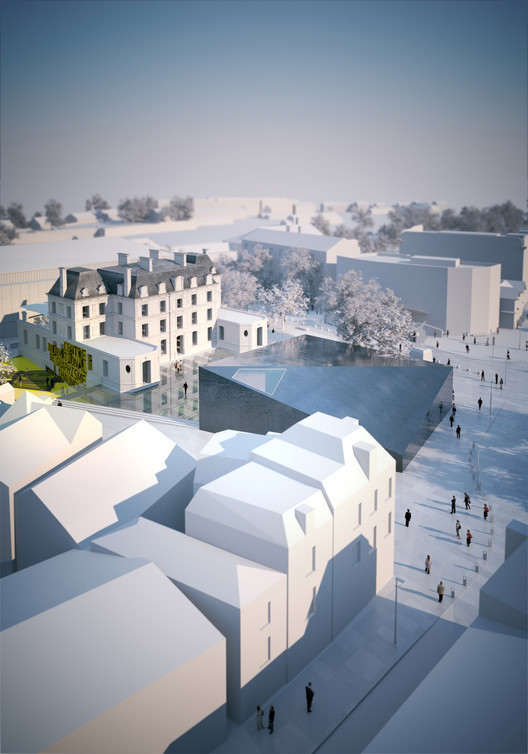
The French design team, Olgga Architects, recently placed second in the competition to design the International Graphic Design Center in Chaumont, France. Images of their proposal in addition to a press release narrative from the architects can be viewed after the jump.
The International Graphic Design Center is part of the framework for urban revitalization set in motion around the Chaumont multimodal station. How does one integrate local amenities while fulfilling National and European objectives? What exactly is a cultural institution dedicated to Graphic Arts ?












